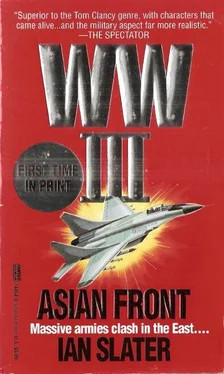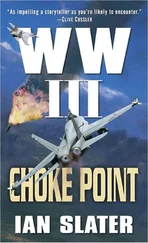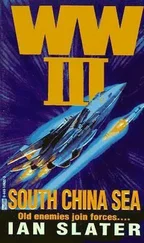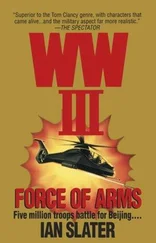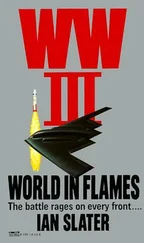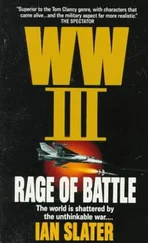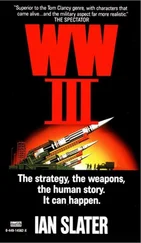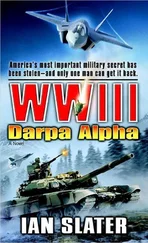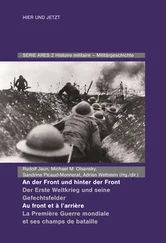What in hell was Freeman doing?
* * *
What Freeman was doing was waiting for the brand new M-1 Abrams-1 Block 3 automatic loader, modular-armor, main battle tanks, which at fifty-one tons versus the old sixty-plus could go faster and fight harder but which were now sitting cluttered dockside, the U.S.A.’s power failures meanwhile paralyzing communications not only from the Pentagon to the West Coast but even within the Pentagon itself.
Meanwhile Freeman’s G-2 was informing him that General Cheng’s ChiCom buildup along the Manchurian border was continuing unabated, that Second Army must expect an all-out crossing of the Amur within seven days. There was another “minor” impediment, as Freeman, with calculated understatement, put it.
“They can hit me from the Turpan depression with intermediate missiles if I move south to engage the Manchurian west flank.”
“Yes, they can,” Norton confirmed.
“Your estimate, gentlemen?” Freeman asked, looking about the forward headquarters Quonset hut at Chita.
“We’re between a rock and a hard place,” a young colonel proffered. Norton waited for the explosion to come for the officer having stated the obvious, but it didn’t.
“Colonel’s quite correct,” Freeman conceded, his face drawn and tired from looking at the maps. “Well, gentlemen, there’s only one thing to do!”
“Sir?” Norton asked.
“Take a walk.” And with that Freeman buttoned up his winter coat and pulled on his gloves.
“Sir?” It was Norton.
“Yes?”
“Think you’d better have two minders.”
“Whatever you think, Dick, but if the good Lord says your time’s come, so it has.” And with that, two nonplussed marksmen were sent out after him.
“Give him at least twenty yards,” Norton advised them. “Otherwise he’ll start giving you the gears for being goddamned nannies. Got it?”
“Yes, sir. Ah, Colonel Norton, sir?”
“Yes?”
“I sure hope he thinks of something to get us out of this—”
A clump of needle ice crashed from a pine onto the roof of a Humvee.
“So do I,” Norton said.
Freeman hadn’t even turned at the ice smashing on the Humvee; he was already doing what Norton called his “Napoleon”: head down, walking stick behind him, trudging through the crisp spring snow. The PLA was south and east of him along the Manchurian hump, and no word yet from the SAS/D team he’d sent in to sound out the Mongolians’ disposition.
* * *
East of Nalayh, over four hundred miles south of the confluence of the Manchurian-Siberian-Mongolian border, the wind was increasing and Aussie Lewis, after having floated down into the gritty dust storm, had to rely entirely on his GPS to know exactly where he was. He lost sight of the Talon completely, hearing only its fading roar as it, together with its fighter escort, withdrew, heading back north to Second Army’s territory.
Aussie wasn’t bitter — had he been David Brentwood he would have done the same thing, ordering the Talon to withdraw, not having enough time to try another FUST.
As Aussie unclipped his chute, the head herdsman moved quickly over to him, yelling excitedly. Perhaps he had heard a chopper, but no, now the Talon had gone, the dogfights had ended, and all he could hear was the banshee howl of the wind. Then he saw it, suspended by two parachutes, a blurred orange image at first in the dust but its archetypal image more definite now as it struck the ground, bounced, and flipped on its side.
“You bloody beaut!” Aussie shouted, immediately running to and unharnessing the Talon’s farewell gift. It was no guarantee he’d get away, but at least there was a chance. The headman recognized it of course as a motorcycle, but he had only seen some of the motor and sidecar units of the Chinese army in earlier skirmishes with the PLA over southern borders — not one like this.
“You bloody beaut!” Aussie repeated. It was a khaki-painted Kawasaki-250D8, which had won out against the Harley-Davidson and Yamaha for the marine corps and army contract. Used mainly in Desert Storm for recon and courier service during radio silence among the most forward units, the Kawasaki had performed well. Aussie cut the chute straps with his ankle K-bar knife, heaving the 296-pound bike up onto its stand, and could hear the tight slosh of a full tank, another jerrican of gas strapped to the left side of the pinion seat, a carbine in a right hand reverse cavalry leather holster.
With a liquid-cooled engine, the Kawasaki could give him eighty-plus miles per hour over the rock-strewn plains, the motorcycle modified for the army so as to have wider, better-grip tires, especially in sand, with a forty-six-tooth rear-tires sprocket, giving it two better than the standard forty-four and so reducing its gearing. And the biggest plus of all, given Aussie’s position, was that the Kawasaki had a liquid-cooled engine. This made it not only more environmentally friendly in reducing fuel emission but more importantly for Aussie made it about the quietest bike in its class.
Aussie figured if he could average fifty miles per hour through the dust storm that had now enveloped him and the enemy alike and could drive on through the night, he could make the border in eight to ten hours. But first he went back to the bullet-riddled Spets chopper and helped himself to a Makarov pistol, an AK-74 with six clips, and a dozen Spets F-1 grenades. He stuck two of them in the pockets of his del and the others in the right saddlebag with a water canister and the dried camel meat the herdsmen had given him.
Using a canvas strap from the parachute he made a sling for the AK-74, the Makarov 9mm in his belt beneath his del, a pair of ten-power night-vision binoculars around his neck, and packed on — or rather, packed around — the pinion seat more cargo from the immobilized chopper, namely an RPG-7D antitank rocket launcher with five rockets. Then, courtesy of the dead Spets chopper pilot, he took off the man’s Spets uniform, including the telltale blue-and-white-striped T-shirt, rolling it into a bundle that he stuck between the seat and gas tank. The herdsman was grinning appreciatively and shook Aussie’s hand vigorously as if it were a water pump.
Two minutes later, Aussie was lost to the herdsmen’s view in a muffled roar as the Kawasaki headed east from the gher caravan that itself was already on the move. Checking his GPS, Lewis knew exactly where he was within ten meters because of the satellite triangulation. What he couldn’t tell was what he’d meet along the way, and soon he was too far from the ghers to see what happened a half hour later when a Spets chopper out of Nalayh blasted the moving caravan of ghers to a stop, then landed and took prisoners.
In the swirling dust storm they asked them which route me American had taken and how was he traveling — by camel, by foot — how! The Siberian fighters, probably Fulcrums, though having driven off the Americans, had reported the three dirigibles that were part of the single-line extraction technique. Where was the fourth? Was he heading north or east for the border — along the Indermeg road or even further east towards Choybalsan on the Herlen River before turning north?
The terrified Mongolians reminded the Spets that the Mongolian People’s Republic was a friend of the Siberians and told the Spets that they did not know what direction the fourth American took. The Spets loaded them all aboard the Hind, flew it to two thousand feet above the dust cloud, where it looked like a huge, bug-eyed dragonfly, and threw all of them — seven adults and three children — out, then headed toward Choybalsan. Flying through the dust storm they could see nothing, but one never knew — a sudden shift in the wind here and there might suddenly reveal a break.
Читать дальше
